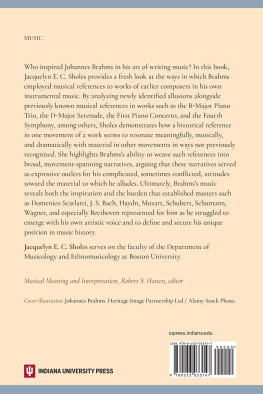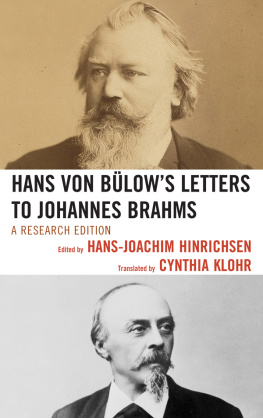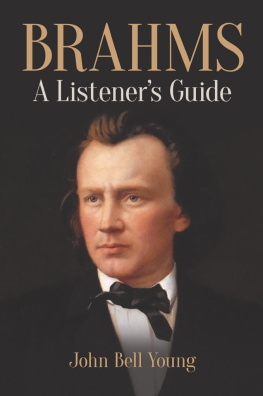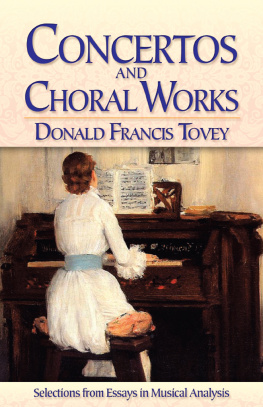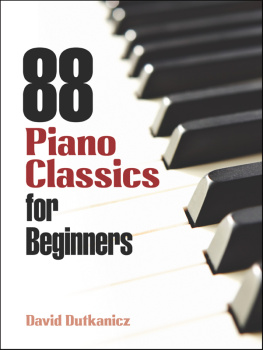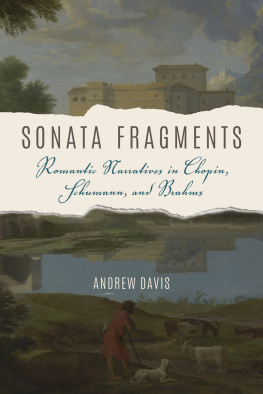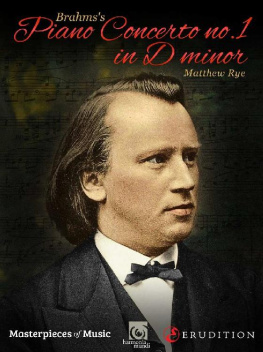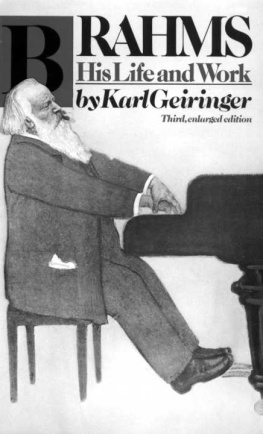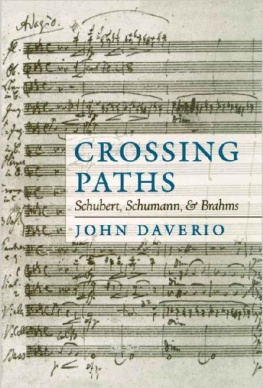Landmarks
Page-list
Musical Instrument Abbreviations
Fl. = Flute
Ob. = Oboe
Cl. = Clarinet
Bsn. = Bassoon
C. Bsn. = Contrabassoon
Hn. = Horn
Tpt. = Trumpet
Tbn. = Trombone
Pf. = Piano(forte)
Vln. I = Violin I
Vln. II = Violin II
Vla. = Viola
Vc. = (Violon)cello
Cb. = (Contra)bass
(For transposing instruments, the key is indicated in parentheses, e.g., Hn. (C) designates horns in C.)
Acknowledgments
I WOULD LIKE to thank the numerous colleagues, friends, mentors, and family members who generously gave of their time and expertise and provided much encouragement and support during the period in which this book came into being. I begin by thanking acquisition editors Janice Frisch and Raina Polivka, series editor Robert Hatten, the editorial board of Indiana University Press, and the manuscript reviewers for their enthusiasm about this project, for their expertise and insight, which were invaluable as I made final revisions to the text, and for guiding me so smoothly through the review and publication process with my first book. Thanks also to those on the production teams at Indiana University Press and at Ninestars who helped to prepare the project for publication, particularly Nancy Lightfoot and Narasimhan, and to Benjamin Ayotte for typesetting the musical examples. I send most profound thanks to Christopher Reynolds for his encouragement and his support of this project and for his detailed, thoughtful feedback on the manuscript. Many thanks to Margaret Notley for her editorial work for 19th-Century Music on my article on Brahmss op. 8 Trio, as well as to Lawrence Kramer and the journals editorial board for their helpful feedback on the article, on which Chapter Two of this book is based; both the article and the chapter are the stronger for their work.
I will be forever grateful to my dissertation advisor, Allan Keiler, for his thoughtful readings of early versions of some of the material presented here and for his guidance not only in developing this material, but in developing as a thinker and a writer. I am also deeply grateful to the other members of my dissertation committee, Eric Chafe and Daniel Beller-McKenna, whose feedback on early drafts was, similarly, delivered with much insight and much kindness. I am thankful to all three for remaining so steadfastly supportive of my work and my career over the past several years.
I am deeply thankful as well to the American Musicological Society for two generous publication subventions from the AMS 75 Pays Endowment, funded in part by the National Endowment for the Humanities and the Andrew W. Mellon Foundation, which helped to cover costs related to the preparation of this book. I am grateful to the American Brahms Society for the award of a Geiringer Scholarship in Brahms Studies, which helped to support my research in its early stagesand also to the Graduate School of Arts and Sciences and the Music Department at Brandeis University for supporting my work with a Phyllis G. Redstone Dissertation-Year Fellowship, a Herbert and Mildred Lee Fellowship, and a four-year doctoral fellowship.
In my current position in Boston Universitys Department of Musicology & Ethnomusicology, I have been extremely grateful for the advice and support of department chairs Victor Coelho and, before him, Jeremy Yudkin, and for the collegiality of current and former fellow department members Mari Abe, Michael Birenbaum-Quintero, Sean Gallagher, Brita Heimarck, Miki Kaneda, Thomas Peattie, Joshua Rifkin, Andrew Shenton, and Rachana Vajjhala. I am grateful to Jeremy Yudkin and Lewis Lockwood, co-directors of the Center for Beethoven Research at Boston University, for the opportunity to serve as Scholar in Residence at the Center in 201718. I would also like to thank current and former mentors, colleagues, and research and administrative staff in the music departments and libraries of Boston University, Brown University, Wellesley College, Williams College, Harvard University, and Brandeis University, including Jennifer Bloxam, Pamela Bristah, Marci Cohen, Vera Deak, Marion Dry, Claire Fontijn, Dana Gooley, Marjorie Hirsch, Sarah Hunter, David Kechley, Robert Levin, Michael McGrade, Holly Mockovak, Jessie Ann Owens, Eric Rice, Darwin Scott, Laura Stokes, and Anthony Sheppard.
I am grateful to Roger Moseley for sharing with me the contents of his article on Brahmss B-Major Piano Trio just prior to the articles publication in the Journal of the Royal Musical Association and to Paul Berry for discussing with me in detail the contents of his book Brahms among Friends in advance of the books publication in 2014. Thanks also to Scott Burnham, David Ferris, Nancy Reich, the late Joel Sheveloff, and Boston University German Studies scholar William Waters for responding quickly and thoroughly to questions related to their respective areas of expertise.
I would like to thank several other fellow Brahms scholars not yet mentioned for welcoming me so warmly into their ranks in the early years of my career, for their collegial support and, in some cases, for their feedback on work published elsewhere. Sincerest gratitude and admiration to Styra Avins, George Bozarth, David Brodbeck, Robert Eshbach, Walter Frisch, Valerie Goertzen, Virginia Hancock, William Horne, Karen Leistra-Jones, Marie Sumner Lott, Laurie McManus, Heather Platt, Daniel Stevens, and many other members of the Brahms community and the broader musicological community with whom I look forward to future conversations.
Thanks are in order, as well, to the teachers who helped me to prepare for graduate work and ultimately a career in musicology, most especially Susan Schoonmaker, Eric Delson, Julia Hawkins, and Wellesley College faculty members Martin Brody, Charles Fisk, Vincent Jay Panetta, and the late Arlene Zallman. Without the knowledge they shared with me during some of my most formative years, and without the skills they helped me to develop, I could never have hoped to succeed as a professional musicologist. I will always be grateful to them for the roles they played in enabling me to pursue a career in this field.
I would also like to thank all of the students I have taught over the past several yearsat Boston University, Brown University, Wellesley College, Williams College, the University of Massachusetts Boston, Harvard University, and Brandeis University, as well as my private piano studentsfor serving as constant reminders of why I chose to join this field, for allowing me to share with them what I love and what I have to give, and for helping me to grow as a teacher and as a person while learning more about my field and while refining my ideas and their presentation. I also thank my current and former teaching assistants at Boston University and Brown Universitynamely Melody Chapin, Brett Kostrzewski, Shaoying Ho, and Kristen Edwardsfor their help, which resulted in my being able to devote to research and writing more time than would otherwise have been available.
My heartfelt thanks go to other colleagues and to friends and family who provided general advice, moral support, and professional encouragement, or feedback on partial draftsor who otherwise served as sounding boards for some of the ideas I present in the following pages. Thanks in particular to John Aylward, Bruce Alan Brown, Will Butts, Michael Cuthbert, Dana Dalton, Joan Gaylord, Tracy Gleason and Dave Kaiser, Cathy Gordon, Melissa de Graaf, Erin Jerome, Elizabeth Joyce, Kevin Karnes, Erinn Knyt, Benjamin Korstvedt, Daniel Libin, Carolyn Lyons and Chris Dangel, Rebecca Marchand, Katarina Markovic, Alexandra Sholes McLeod and Chris McLeod, Becky Miller, Joseph Morgan, Adriana Ponce, Sam Rechtoris, Margarita Restrepo, Douglas Shadle, Adam and Linda Sholes and family, Daniel Sholes, Jason Silver, Alexander Stefaniak, and Bennett Zon. I also thank Liza Wachman Percer for her helpful advice on the publishing process.

